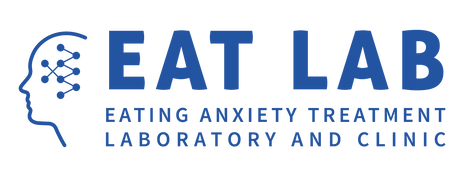|
By Shruti Shankar Ram
Consider this: a friend or peer of yours has developed a particular obsession with food – to the point where they count the number of bites they take from their meal, or arrange their food in a specific way every time they eat. They might also have to eat their food in a methodical way and refuse to eat certain foods. This information alone might make you suspect that they have an eating disorder, but these symptoms could also be seen in another mental illness – obsessive compulsive disorder (OCD). Obsessive-compulsive disorder is characterized by repetitive, intrusive thoughts, feelings or sensations that cause anxiety, often accompanied by the need to engage in a repeated habit or ritual that serves to reduce this anxiety in the short-term. Similar to eating disorders, there are also various types of OCD, and the obsessions and compulsions can range from a variety of different things – from health to religion and sexual orientation. Eating disorders and OCD are often heavily stereotyped in the media. While you may immediately think of a teenage girl with anorexia nervosa when thinking of an eating disorder, or a person excessively washing their hands when thinking of OCD, the reality is that both these disorders affect individuals from both genders from a wide variety of different backgrounds and across all ages. Unfortunately, these stereotypes could keep individuals with both these disorders from realizing that they even have the disorder or recognizing the signs in their peers, and this keeps people from getting the treatment that they need. Stereotyping aside, OCD and eating disorders actually share a lot of commonalities. There are several parallels that can be drawn between these two mental illnesses. An example of an obsessive behavior that is seen across both these illnesses is checking. While someone with OCD may constantly check their stove or locks in their house, a person with an eating disorder may constantly check themselves in the mirror or weigh themselves frequently. This is no coincidence, eating disorders and OCD actually co-occur quite frequently (Rubenstein et. al., 1993; Halmi et. al., 2005; Swinbourne and Touyz, 2007) and eating disorder pathology has been shown to be positively associated with obsessive-compulsive symptoms (Davies et. al., 2009; Naylor et. al., 2011). In fact, obsessive-compulsive symptoms have also been associated with higher relapse rates in eating disorders (Carter, et. al., 2012). Individuals with OCD and eating disorders typically also share two traits in common – high levels of anxiety and perfectionism. In fact, it is quite common for individuals with these disorders to excel in various other areas of their life while silently suffering from the illness. Perfectionism may be seen as a positive trait by some, but it has been shown to mediate the relationship between OCD and eating disorders, and individuals with either or both of these illnesses typically have high levels of trait perfectionism (Bernert et. al., 2013). Additionally, obsessional anxiety could help maintain both OCD and eating disorder symptoms. This anxiety surrounds possible catastrophic outcomes that may occur if the ritualistic behaviors is not completed – in the case of an eating disorder, this could mean that an individual believes that, unless they heavily restrict, they will gain large amounts of weight and become overweight. In the case of obsessive-compulsive disorder, this could mean that an individual believes that they will die unless they are constantly avoiding germs and washing their hands. This anxiety leads to drawing associations between certain rituals and outcomes – even if they appear irrational to others. Not only are there common symptoms between eating disorders and OCD, but the treatment can also look similar. Specifically, exposure and response prevention therapy (ERP) is an evidence-based treatment that has been well established as the most effective treatment for OCD (Koskina et. al., 1996), and research is beginning to show that ERP may be effective in treating eating disorders as well (Ambramowtz et. al., 2013). Combining exposure therapy with cognitive-behavioral therapy (CBT) is effective in breaking up these irrational associations between ritualistic behaviors and the reduction of anxiety. It is important to note that, of course, eating disorders and OCD, are two very different illnesses. The obsessions and compulsions of an individual with OCD can extend far beyond food, and individuals with eating disorders often experience symptoms that are not typically present in OCD, such as body dysmorphia and drive for thinness. However, it is important to understand the relationship between these disorders, particularly as the comorbidity rate is so high. So, if you do question whether a friend or peer has an eating disorder or OCD – consider the possibility that it could be both! References Abramowitz, J. S. (1996). Variants of exposure and response prevention in the treatment of obsessive-compulsive disorder: A meta-analysis. Behavior Therapy, 27(4), 583-600. doi:10.1016/S0005-7894(96)80045-1 Bernert, R. A., Timpano, K. R., Peterson, C. B., Crow, S. J., Bardone-Cone, A. M., le Grange, D., & ... Joiner, T. E. (2013). Eating disorder and obsessive–compulsive symptoms in a sample of bulimic women: Perfectionism as a mediating factor. Personality And Individual Differences, 54(2), 231-235. doi:10.1016/j.paid.2012.08.042 Davies, H., Liao, P., Campbell, I. C., & Tchanturia, K. (2009). Multidimensional self reports as a measure of characteristics in people with eating disorders.Eating And Weight Disorders,14(2-3), e84-e91. doi:10.1007/BF03327804 Halmi, K. A., Tozzi, F., Thornton, L. M., Crow, S., Fichter, M. M., Kaplan, A. S., et al. (2005). The relation among perfectionism, obsessive–compulsive personality disorder and obsessive–compulsive disorder in individuals with eating disorders. International Journal of Eating Disorders, 38, 371–374. Koskina, A., Campbell, I. C., & Schmidt, U. (2013). Exposure therapy in eating disorders revisited. Neuroscience And Biobehavioral Reviews, 37(2), 193-208. doi:10.1016/j.neubiorev.2012.11.010 Naylor, H. et. al. (2011) Beliefs about excessive exercise in eating disorders: the role of obsessions and compulsions. European Eating Disorders Review, 19, 226–236, DOI: 10.1002/erv.1110 Rubenstein, C. S., Pigott, T. A., Altemus, M., L'Heureux, F., Gray, J. J., & Murphy, D. L. (1993). High rates of comorbid OCD in patients with bulimia nervosa. Eating Disorders: The Journal Of Treatment & Prevention, 1(2), 147-155. doi:10.1080/10640269308248282 Swinbourne, J., & Touyz, S. (2007) The co‐morbidity of eating disorders and anxiety disorders: a review. European Eating Disorder Review, 15, 253–274. https://doi.org/10.1002/erv.784
4 Comments
|
Archives
January 2024
Categories |
- About
- People
- Our Research & Publications
-
Participate in Research
- Personalized Interventions and Outcomes: Navigating Eating Disorder Experiences and Recovery (PIONEER) Study (Online)
- Youth Eating Study (YES!)
- Tracking Restriction, Affect and Cognitions (TRAC) Study (Online)
- Virtual Reality Study
- Facing Eating Disorder Fears Study (Online)
- Personalized Treatment and CBT-E Study (Online)
- Body Project Summer Camp
- The Body Project
- Clinical Screener Study (Online)
- Clinic, Supervision, and Consultation
- Blog & In the Press
-
Archived Studies
- Predicting Recovery Study (Online)
- Online Single Session Resources
- Reconnecting to Internal Sensations and Experiences (RISE) Study
- Web-Based Mindfulness Study
- Personalized Treatment Study
- Online Imaginal Exposure Study
- In-Vivo Imaginal Exposure Study
- Daily Habits 3 Study
- Daily Mood Study
- COVID-19 Daily Impact Study
- Conquering fear foods study
- Louisville Pregnancy Study
- Approach and Avoidance in AN (AAA) Study
- Web-Based Mindfulness for AN & BN Study
- Barriers to Treatment Access (BTA) Study!
- Mindful Self-Compassion Study
- Network EMA Study
- Legacy of Hope Summit Report
- DONATE-CURE EATING DISORDERS!
- Directions
- Statistical Consultation
- About
- People
- Our Research & Publications
-
Participate in Research
- Personalized Interventions and Outcomes: Navigating Eating Disorder Experiences and Recovery (PIONEER) Study (Online)
- Youth Eating Study (YES!)
- Tracking Restriction, Affect and Cognitions (TRAC) Study (Online)
- Virtual Reality Study
- Facing Eating Disorder Fears Study (Online)
- Personalized Treatment and CBT-E Study (Online)
- Body Project Summer Camp
- The Body Project
- Clinical Screener Study (Online)
- Clinic, Supervision, and Consultation
- Blog & In the Press
-
Archived Studies
- Predicting Recovery Study (Online)
- Online Single Session Resources
- Reconnecting to Internal Sensations and Experiences (RISE) Study
- Web-Based Mindfulness Study
- Personalized Treatment Study
- Online Imaginal Exposure Study
- In-Vivo Imaginal Exposure Study
- Daily Habits 3 Study
- Daily Mood Study
- COVID-19 Daily Impact Study
- Conquering fear foods study
- Louisville Pregnancy Study
- Approach and Avoidance in AN (AAA) Study
- Web-Based Mindfulness for AN & BN Study
- Barriers to Treatment Access (BTA) Study!
- Mindful Self-Compassion Study
- Network EMA Study
- Legacy of Hope Summit Report
- DONATE-CURE EATING DISORDERS!
- Directions
- Statistical Consultation

 RSS Feed
RSS Feed
